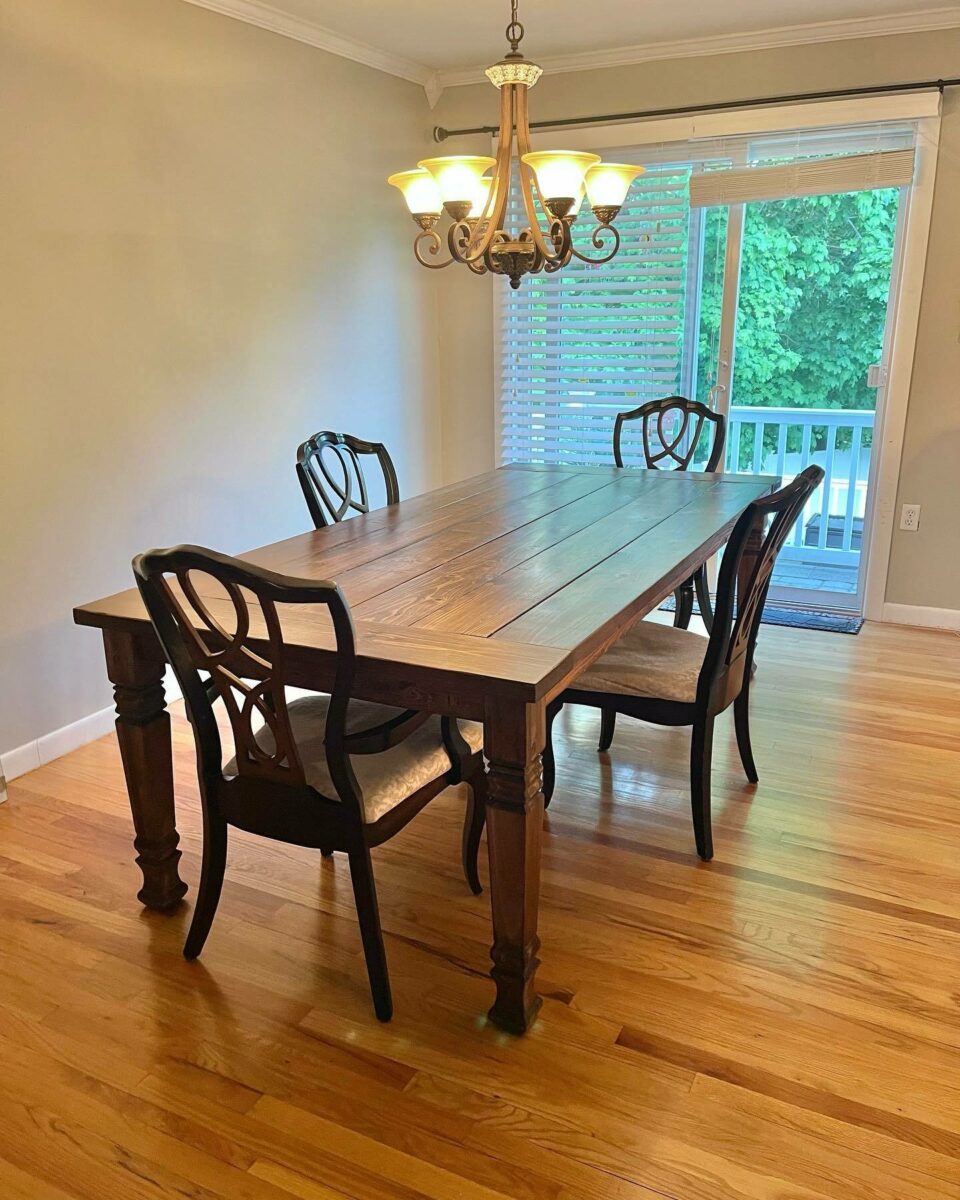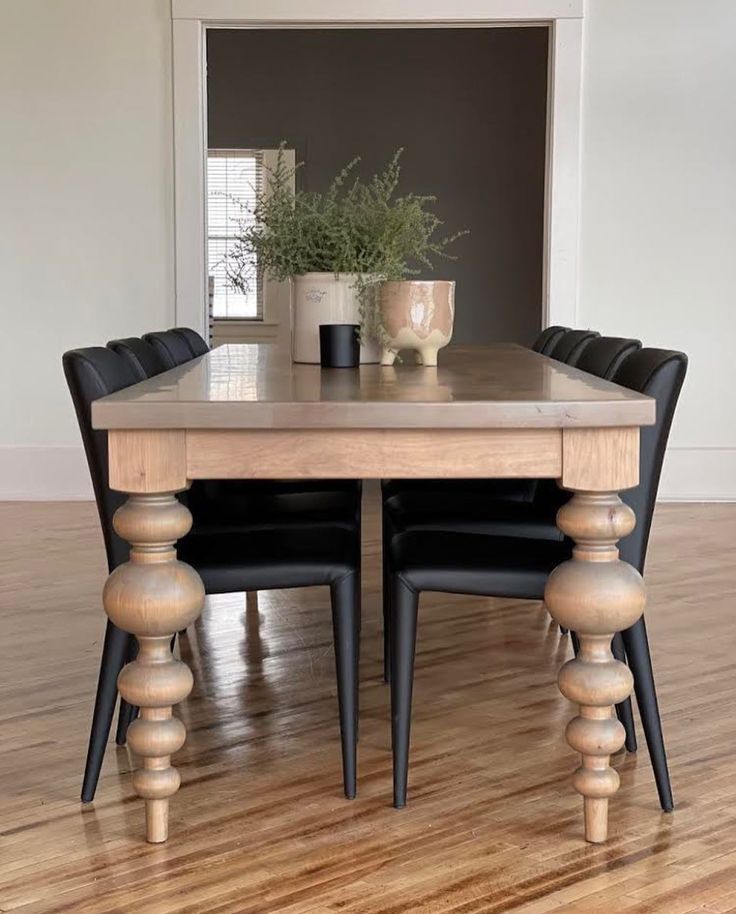The Best Materials for Durable and Elegant Dining Room Table Legs
The Best Materials for Durable and Elegant Dining Room Table Legs
Blog Article
Professional Tips for Setting Up Dining-room Table Legs for Optimum Security
When it comes to mounting eating space table legs, achieving optimum security is critical for both performance and aesthetics. What certain strategies can improve security even further?
Choose the Right Legs
When picking the proper legs for your eating area table, it is vital to take into consideration both functionality and appearances. The legs you choose will considerably influence the total design and stability of the table. First, assess the table's meant usage; if you anticipate constant gatherings, sturdier legs, such as those made from solid wood or metal, may be better, as they use raised sturdiness and support.
Following, take into consideration the elevation and design of the legs in connection with the table top. Standard dining tables generally range from 28 to 30 inches in height, so ensure the legs align with this criterion for convenience. The design of the legs must match the style of the tabletop-- whether it be modern, rustic, or typical. For circumstances, conical legs can add a contemporary touch, while turned legs could share a much more traditional aesthetic.

Select Appropriate Equipment
How can the best hardware boost the security and long life of your dining-room table? The option of ideal hardware is critical to ensuring that the legs of your table are securely connected and able to withstand regular usage. High-grade screws, screws, and brackets give the necessary toughness to support the weight of the table, in addition to any kind of additional tons placed upon it during meals or events.
When picking screws, select those made from durable products such as stainless steel or brass, which resist rust and maintain integrity gradually. The length of the screws is similarly essential; they need to permeate deeply right into the table's structure without endangering stability. For bolted connections, consider making use of lock washers to prevent loosening as a result of vibration or movement.
Furthermore, making use of corner braces can include extra support, particularly for bigger tables or those with much heavier tops. These braces disperse weight uniformly and aid maintain the table's form. Guaranteeing that the hardware you select is suitable for the specific products of your table will further improve its overall stability and longevity, allowing you to enjoy your eating experience for years to come.
Ensure Proper Positioning
Appropriate positioning of dining-room table legs is essential for both aesthetic allure and practical stability. Misaligned legs can cause an unequal tabletop, which may not just be visually unattractive but likewise endanger the table's functionality. To attain ideal placement, begin by determining the range from the table's corners to the leg accessory factors. This guarantees that each leg is positioned equidistant from the sides, producing a well balanced appearance.
Utilize a level during setup to confirm that each leg is vertical to the pop over to this site table top. It is a good idea to note the wanted leg placements on the bottom of the table with a pencil or covering up tape prior to safeguarding them.
In addition, double-check the alignment after the initial screws are tightened, as changes may be essential prior to totally safeguarding the equipment. By focusing on proper positioning, you not only enhance the table's overall design yet additionally make certain that it continues to be stable and functional for years ahead.

Think About Weight Distribution
After making certain correct positioning of the dining area table legs, it is necessary to think about weight circulation to improve stability and capability. dining room table legs. Appropriate weight circulation is vital in avoiding wobbling and making sure that the table can support its desired tons without threat of tipping or breaking down
When positioning the legs, guarantee they are placed at equivalent distances from the facility of the table to evenly disperse the weight throughout the structure. Take into consideration the weight of the tabletop and check my site any kind of additional reading products that will regularly rest on it, such as attractive pieces or tabletop home appliances. Tables with heavier surface areas should ideally have legs located closer to the corners, as this makes best use of the base of support and lessens the threat of instability.
Additionally, if the table is meant for use in a high-traffic location, take into consideration utilizing heavier materials for the legs or including maintaining elements, such as cross-bracing or a lower rack - dining room table legs. These adjustments can help preserve equilibrium and prevent shifting during usage. Inevitably, a well-considered weight distribution technique will dramatically boost the table's overall performance, ensuring it stays a attractive and practical focal point for your eating room
Examination Stability Before Usage
Testing the stability of the dining-room table before usage is a crucial step that should not be neglected. Making sure that the table is secure and secure can prevent accidents and prolong the lifespan of the furniture. Begin by applying mild stress to numerous factors on the table surface area. Press down on the center and after that along the edges, shifting or observing any wobbling. If the table reveals instability, recognize the legs or joints that might call for modification.
Next, check that all screws and fasteners are tightened up effectively. Loosened connections can result in instability and potential damage with time. If essential, make use of wood adhesive on joints to boost security, ensuring to allow sufficient drying time.

Conclusion
Finally, the installation of dining-room table legs requires cautious factor to consider of materials, weight, equipment, and placement distribution to attain maximum stability. By choosing high-quality fasteners and strong legs, making certain precise positioning, and dispersing weight uniformly, the architectural honesty of the table can be significantly enhanced. Carrying out a stability examination before normal use additionally makes certain that the table will certainly withstand everyday pressures, thereby offering a trustworthy and secure eating experience.
When it comes to mounting eating area table legs, attaining optimum stability is vital for both performance and appearances. The legs you pick will dramatically influence the general style and stability of the table (dining room table legs). Basic dining tables generally range from 28 to 30 inches in elevation, so make certain the legs straighten with this requirement for comfort.Proper alignment of eating space table legs is vital for both aesthetic appeal and useful security.In conclusion, the installation of eating space table legs requires mindful factor to consider of products, placement, hardware, and weight circulation to accomplish maximum security
Report this page